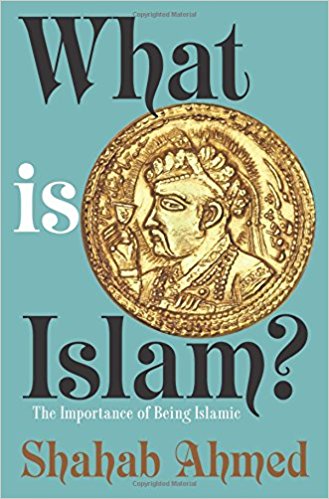Shahab Ahmed tells us up front that he is not going to answer the question “what is Islam?”. And of course, he does not really do so, but the title (misleadingly) suggests that he will, and in the course of the book, he comes perilously close to trying (and failing) to do so without outright saying he is going to do it. In short, Shahab himself seems confused about what he is trying to achieve here. The book is a description of some (but certainly not all) aspects of Islamic culture as it developed and expanded, especially AFTER the initial Arab phase of empire building. And it is a long argument with various seen and unseen opponents who want to define Islam as some ONE thing. In the course of this argument, Shahab wants to show that Islam was very varied, but he also wants to show that it is not infinitely varied. In the course of an overly long book, he manages to show that Islamicate societies (a term he does not really approve of) had a very wide variety of beliefs and practices, though they also remained anchored within a certain tradition and in continuous argument with particular foundational texts. All of this may be a surprise to extreme puritanical Islamists AND to more or less ignorant anti-Islamists, but should be no surprise at all to anyone else. Why wouldn’t there be a lot of variety? Anyway, if you happen to spend your life arguing with people who have a very monochromatic view of Islam, then you can keep this book handy in order to prove otherwise. It is good for that.
Beyond that, it is a rich compendium of anecdotes (he has read VERY widely and quotes extensively from hundreds of sources) and you will learn a lot about the “Balkans to Bengal complex”, a cultural zone that Shahab Ahmed is particularly fond of and regards as archetypically Islamic. Incidentally, you will also be able to prove to your friends that Islamic history is characterized by an official/theocratic prohibition of alcohol AND a simultaneous cultural fascination and widespread use and even praise of alcohol, complete with social practices that incorporate regular use of alcohol (e.g. in poetry recitals and courtesan dance performances… though this also being a work of apologetics, the “courtesan” part is not highlighted). What you will NOT find is any mention of how the Islamic empire was created in the first place. Military force and politics are almost completely absent from this cultural history of Islamdom. Make of that what you will. But it is worth keeping in mind that the geographic region extending from the Balkans to Bengal did not just magically happen to switch religions, it was conquered…Still, the the book is worth reading if you want to know more about the cultural history of the core-Islamicate region. It is more or less useless as a book of history. And it is somewhere in between when it comes to theology and philosophy.
Overall, this is high class and erudite apologetics, and the anecdotes collected herein will stand the test of time; but I suspect that the postmodern arguments and apologetics will not age well. When the current phase of history has passed, readers will wonder why Shahab Ahmed is wasting their time with convoluted and wordy arguments about how legitimate or illegitimate this or that simple-minded view of Islam actually is. Then again, maybe postmodernism will not fade away as completely as I imagine (or wish for) and future generations will continue to be fascinated by the verbiage that just seems like waste of space to me.
Time will tell.
Post Script: A friend commented that “you cannot expect him to say more than that..” and I am adding my answer to this review:
I certainly expect a good historian (even a “cultural historian” ) to say much more than that! I happen to be reading Tomb’s “The English and their history” at the same time and the difference is night and day. With Tomb’s book you actually get an attempt at describing the English and their history and culture and so on, with systematic, rational and evidence-based theorizing and refutation of theories. Whether you agree with his particular view or not, you get what he is saying and you get what he is arguing against. Much of the time, you get something close to a “full picture”. With Shahab Ahmed, you are in much more scattered territory and big aspects of history are skipped entirely; Worth reading, but less for its argument, more for its varied and interesting bits of information.
